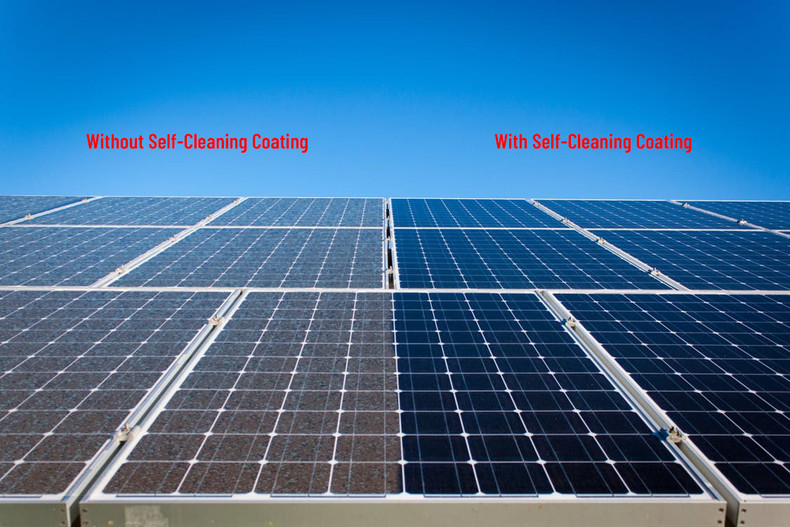Understanding Anti-Reflective Coatings
Anti-reflective coatings are specialized layers applied to solar panel surfaces that minimize light reflection and maximize light absorption. Traditionally, uncoated solar panels reflect away approximately 30% of incoming sunlight, resulting in significant energy loss. ARCs work by creating an optical interference that reduces this reflection, allowing more sunlight to reach the photovoltaic cells beneath the glass surface.
The Science Behind Anti-Reflective Coatings
The effectiveness of anti-reflective coatings lies in their sophisticated design and composition. Modern ARCs typically consist of multiple nanometer-thin layers of materials with varying refractive indices. These layers are carefully engineered to create destructive interference of reflected light waves while allowing transmitted light to pass through constructively.
Common materials used in solar panel ARCs include:
- Silicon dioxide (SiO2)
- Titanium dioxide (TiO2)
- Silicon nitride (Si3N4)
- Magnesium fluoride (MgF2)
Each material is chosen for its specific optical properties and durability under harsh environmental conditions.
Benefits for Indian Solar Installations
India's diverse climate conditions present unique challenges for solar installations. Anti-reflective coatings offer several advantages particularly relevant to the Indian context:
1. Enhanced Performance in High-Temperature Regions
In states like Rajasthan and Gujarat, where temperatures frequently exceed 40°C, ARCs help maintain panel efficiency by maximizing light absorption even during intense heat. Recent studies show that well-designed ARCs can maintain their performance at temperatures up to 85°C, making them ideal for India's hot climate zones.
2. Improved Output During Peak Sun Hours
The coating's ability to capture more light during peak sun hours (10 AM to 4 PM) translates to significantly higher energy generation when it matters most. This is particularly beneficial in India, where peak power demand often coincides with peak sunlight hours.
3. Better Performance in Dusty Conditions
Many regions in India face substantial dust accumulation on solar panels. Modern ARCs often incorporate self-cleaning properties that help reduce dust adhesion, maintaining better performance between cleaning cycles. This feature is especially valuable in arid regions where regular panel cleaning can be challenging.
4. Economic Impact and ROI
The implementation of anti-reflective coatings presents a compelling economic case for solar project developers and homeowners alike:
5. Increased Energy Generation
Current-generation ARCs can boost solar panel efficiency by 3-4% compared to non-coated panels. For a typical 100 kW commercial installation in India, this can translate to additional annual generation of 4,380-5,840 kWh, based on average solar irradiance levels.
6. Long-Term Durability
Quality anti-reflective coatings are designed to last the entire lifetime of the solar panel (25-30 years). The initial investment in ARC-treated panels is offset by:
- Higher energy generation throughout the panel's lifetime
- Reduced cleaning and maintenance requirements
- Better resistance to environmental degradation
7. Faster Break-Even Period
The enhanced efficiency provided by ARCs can reduce the system's payback period by 6-8 months, making solar investments even more attractive for Indian businesses and homeowners.
8. Latest Developments in ARC Technology
Recent advances in anti-reflective coating technology have led to even more impressive improvements:
9. Smart Coatings
New "smart" ARCs are being developed that can actively respond to changing light conditions, optimizing their anti-reflective properties throughout the day. These advanced coatings show particular promise for locations with variable weather conditions, like coastal regions of India.
10. Hydrophobic Properties
Modern ARCs increasingly incorporate hydrophobic properties, which help panels stay cleaner during monsoon seasons and reduce water consumption during cleaning. This feature is especially valuable in water-scarce regions of India.
11. Nano-Textured Surfaces
The latest generation of ARCs uses nano-textured surfaces that mimic moth eyes' natural anti-reflective properties, achieving even better light absorption across a wider range of incident angles.
12. Implementation Considerations
While the benefits of anti-reflective coatings are clear, successful implementation requires careful consideration of several factors:
13. Quality Assurance
The performance of ARCs can vary significantly based on manufacturing quality. It's crucial to select panels from reputable manufacturers who use high-quality coating processes and materials.
14. Installation and Maintenance
Proper installation angle and regular maintenance remain important even with ARC-treated panels. While these panels may require less frequent cleaning, periodic inspection and cleaning are still necessary for optimal performance.
15. Climate-Specific Selection
Different ARC formulations may perform better in different climatic conditions. Working with experienced suppliers who understand local conditions is essential for optimal results.
16. The Waaree Advantage
For those looking to harness the benefits of anti-reflective coating technology in their solar installations, shop.waaree offers a comprehensive range of high-efficiency solar panels featuring advanced ARC technology. As India's leading solar manufacturer, Waaree ensures that all panels are optimized for Indian conditions and backed by robust warranty support. With Waaree's nationwide service network and commitment to quality, you can be confident in your investment in solar technology.


